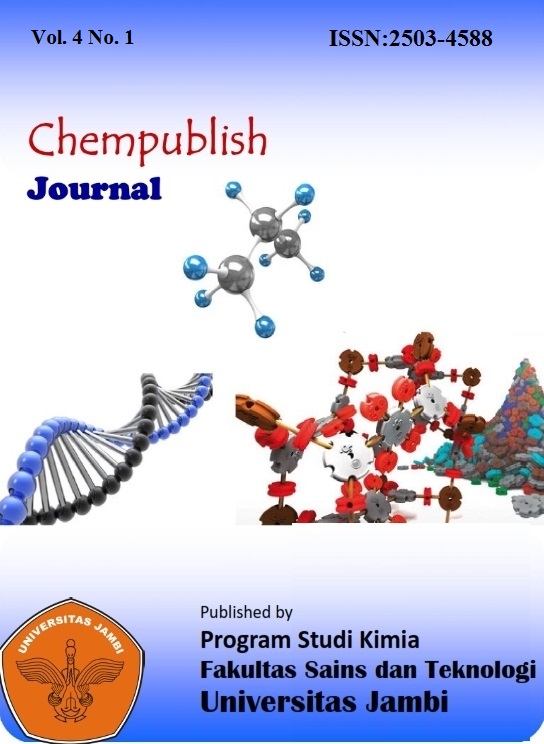The utilization of chicken bone activated carbon as an adsorbent and its implementation in chemistry learning
DOI:
https://doi.org/10.22437/chp.v4i1.6795Abstract
Brownish yellow is one of the characteristics of bore well water which indicates a high concentration of iron (Fe) that will affect human health and damage the aesthetic value. This study aims to purify the bore well water by reducing the concentration of Fe metal by adsorption of chicken bone activated carbon (CBAC) and implementing the results of research on the material of colloidal adsorption properties at Pekanbaru Telkom Vocational High School. CBAC is made through 3 steps namely dehydration at 50oC, carbonization at 400oC and activation with HCl, formic acid and NaOH pa. Each 1 gram of CBAC is mixed with the volume varied by 5; 10; 15; 20 and 25 ml. Measurements of Fe metal concentrations were carried out using Atomic Absorption Spectrophotometer (AAS) and the data obtained were then analyzed descriptively through tables and graphs. Maximum adsorption of CBAC was obtained in 20 ml of bore well water with a percentage reduction 99.92%. All results of treatment meet Fe metal quality standards as stipulated in Republic of Indonesia Minister of Health Regulation No. 416 of 1990. Analysis of student response questionnaires based on questionnaire analysis techniques obtained a cumulative value of 88.62% (very good).
Downloads
Downloads
Published
Versions
- 2019-07-19 (1)
- 2019-07-19 (1)






